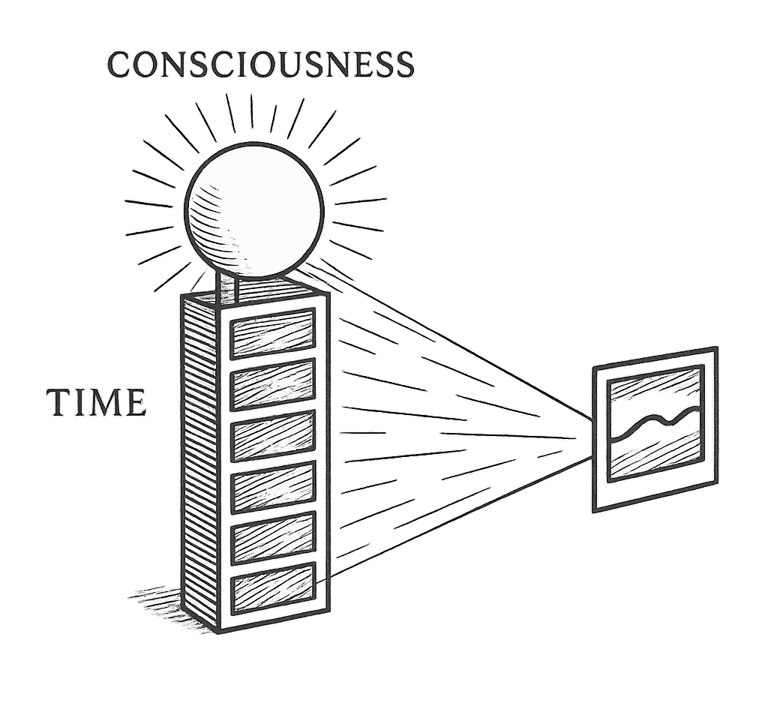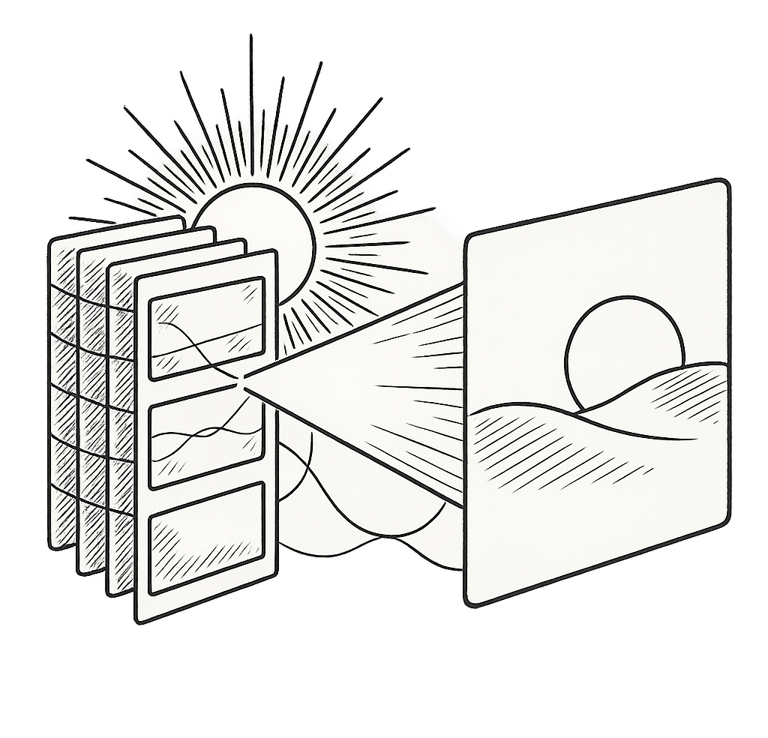Consciousness and the Frames of Time
Consciousness is the active, generative force that not only perceives time but actually creates it¹. Time may be understood as a sequence of discrete frames — static snapshots that, by themselves, are inert and without life². Consciousness is the light behind those frames, illuminating and animating them, much like a projector transforms still images into the moving picture we call reality³.
Every act of observation, choice, and awareness generates new frames, expanding the reel of time as it unfolds. This is not passive witnessing but active creation — a process that parallels the observer effect in quantum physics, where the very act of measurement alters the state of what is being observed⁴. In this way, consciousness is both the seer and the shaper, continuously transforming potential into actuality.
Through quantum entanglement, frames do not exist in isolation but remain subtly connected across time and space⁵. A change in one point of awareness can ripple across the fabric of reality, linking moments in ways that defy the conventional boundaries of cause and effect. Consciousness does not simply light up the present frame — it threads meaning and coherence between them.
Yet this creation is not a continuous stream in the way we might imagine. Consciousness operates through renewal by separation — each frame is a distinct birth, a fresh emergence of reality, separated from the last⁶. Continuity is the illusion produced by the rapid sequence of these renewals, just as the persistence of vision in cinema makes still images appear as motion. What we call “time” is, in truth, a chain of luminous instants, each arising from the dark silence before it.
Without consciousness, the frames of time remain an unlit reel — a collection of unmoving moments, pure potential without form. With consciousness, they become reality itself: flowing, meaningful, and alive.
Consciousness is the active, generative force that not only perceives time but actually creates it:
Time is like a sequence of frames — static snapshots that by themselves are inert.
Consciousness is the light behind those frames, illuminating and animating them, much like a film projector makes still images appear to move.
Every choice, every movement, and every act of awareness produces new frames, so time isn’t a fixed stream we ride along — it’s continually being made by consciousness itself.
This same consciousness projects those frames into a coherent image, which we then experience as reality.
In other words, consciousness isn’t just inside time — it’s the very engine that drives it, the source of both its flow and its appearance




References
Similarity Theory – Dimensions, Time, and Consciousness (Raphael).
Barbour, J. The End of Time (Oxford University Press, 1999) – Concept of time as discrete “Nows.”
Deleuze, G. Cinema 1: The Movement-Image (1983) – The role of the projector as metaphor for continuity.
Wheeler, J.A., Zurek, W.H. (Eds.). Quantum Theory and Measurement (Princeton University Press, 1983) – The observer effect.
Einstein, A., Podolsky, B., Rosen, N. “Can Quantum-Mechanical Description of Physical Reality Be Considered Complete?” Physical Review, 1935 – Quantum entanglement.
Raphael, S. – “Renewal Through Separation” principle within Similarity Theory.

